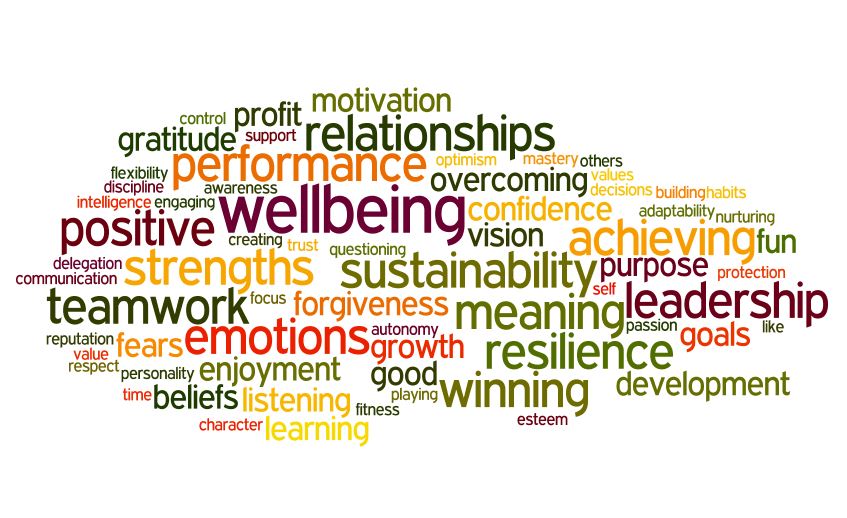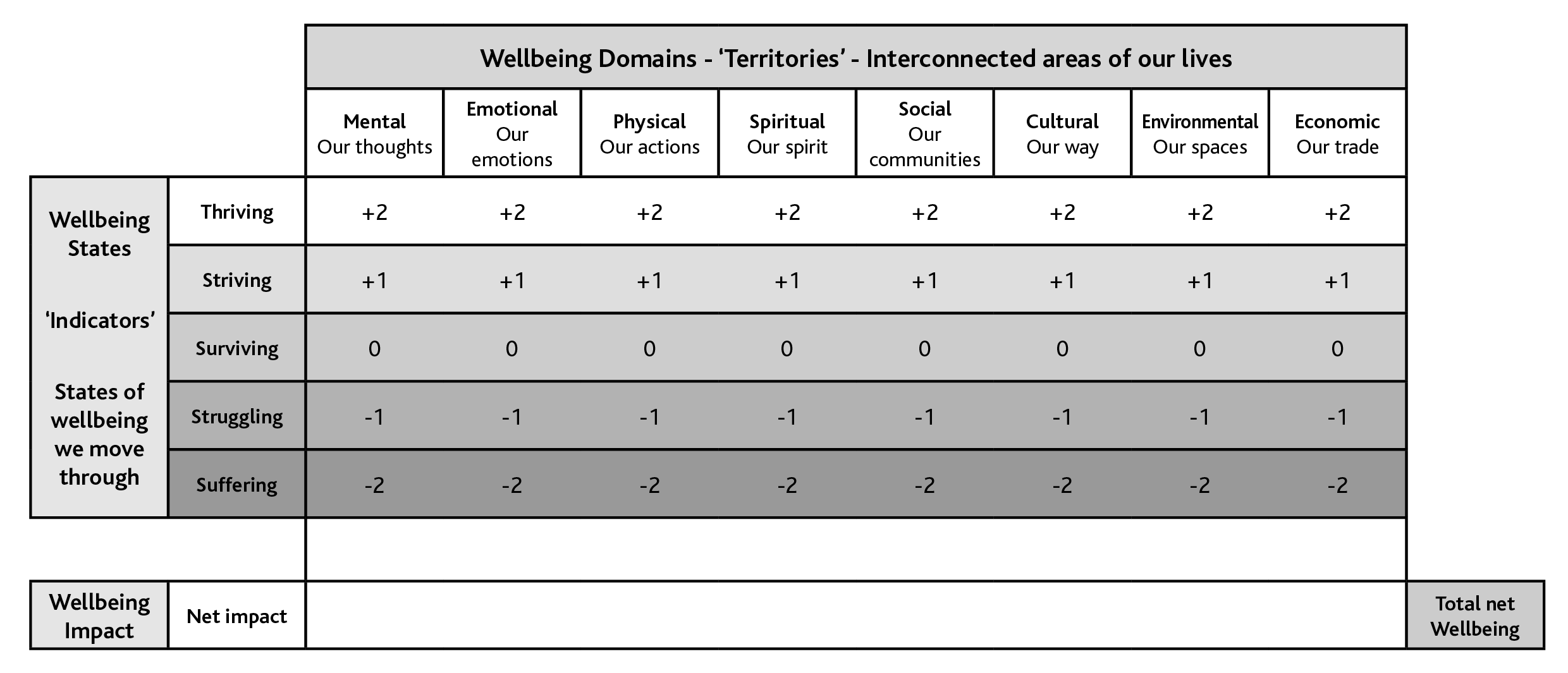A New Concept of Workplace Wellbeing
- May
- 16
- Posted by David Green
- Posted in Uncategorized
- 0

I’ve written this article to introduce a new concept of workplace wellbeing. It is also a call to the auditors, accountants, economists and business leaders of the world to help develop the concept further. With a growing number of governments moving away from narrow GDP measures towards a more meaningful focus on wellbeing we will also need the equivalent frameworks at the workplace level.
So, workplace wellbeing is the contribution of organisations to the quality of our lives, in balance with other species and the planet. This definition recognises the important interdependency between the economy (organisations), society (people) and the environment (resources and places). Each of these three systems plays an important role in our personal and collective wellbeing.
The benefits of adopting this approach
Why is this new concept important and what will it help you do as a business leader?
1. Improving strategy
Strategically, it reminds us what our organisations are for and keeps us focused. If our businesses, products, services or practices aren’t improving the quality of people’s lives, in balance with other species and the planet, then why are we continuing with them?
2. Improving operational co-ordination, decision making and measurement
It provides a single view across environmental, social and economic considerations that should be ‘systemically’ driving all organisational decisions. As such, it will also help align our approach to wellbeing with the UN Sustainable Development Goals (SDGs). In doing so it will guide our organisations to play their part in meeting the challenges and opportunities we face and provides a more aspirational vision of helping people and planet thrive, as opposed to merely survive, which the SDGs are more inclined towards.
3. Improving performance
Environmentally
Increasingly businesses will need to do more with less. As the population grows, resources become scarcer and the impacts of climate change and biodiversity loss start to bite we will need to be more efficient with how we use resources and do all we can to restore our environment.
Socially
This approach to workplace wellbeing encourages us to look at the mental, emotional, physical, spiritual, social and cultural dimensions within our workplaces and the wider impact on all stakeholders. Focusing on wellbeing in this way will facilitate improved engagement, performance and reputation.
Economically
It will enable us to see the performance and ‘growth’ of our businesses and workplaces with a wider lens than just focusing on financial performance. Economies are for meeting the needs of people within the boundaries of planetary limits. We will move to measuring our organisations contribution to ‘net wellbeing’.
The current story
Currently I believe most people view workplace wellbeing in respect to employees. The line of thought is that if we improve our employees wellbeing they’ll perform better and look after our customers better too. There’s nothing wrong with this.
But as the broader ‘stakeholder model’ recognises, this line of thinking is very narrow. We need to think about all of our stakeholders: employees, suppliers, customers, investors, communities and, in our current predicament, other species and the planet as well.
On this basis the new concept of workplace wellbeing comprises three parts:
- It is focused on improving peoples lives across eight domains of wellbeing
- For all stakeholder groups
- Considering environmental, social and economic factors in priority order
What does Net Wellbeing look like?
The multi-dimensional model below, which has been aligned with the UN SDGs and many other national and international wellbeing frameworks allows for the measurement of both highly focused, and wider in scope, objective and subjective factors.
As an example, for a very simple subjective view we might ask the following:
- How well are we contributing to the mental wellbeing of all stakeholders we interact with. Are we helping them to think creatively and imagine better futures or are we causing stress and anxiety?
- For emotional wellbeing we might ask how we make people feel. Are we contributing to the happiness or sadness of employees, suppliers, customers, investors and communities.
- Physically are we contributing to vitality or leaving people feeling drained?
- Spiritually are people fulfilled through seeing the meaning and purpose in our work or are they unfulfilled?
- How are we contributing to social wellbeing? Do stakeholders feel empowered, supported, trusted and engaged or are they disempowered, unsupported, mistrusted and isolated.
- Is our diverse workplace culture creating harmony or conflict?
- Is our workplace contributing to a flourishing environment or is it degrading the environment?
- Lastly is our workplace contributing to widespread prosperity or leaving an unfair proportion in destitution?
Why not score your own business or organisation right now?
Consider the wellbeing or your organisation and its impact across the eight domains of wellbeing on employees, suppliers, investors, customers, the community and the planet:
1. What are the positive impacts your business is delivering?
2. What are the negative impacts?
3. Overall are you causing suffering, struggling, surviving, striving or thriving? Score your business or organisation accordingly.
4. Total all your scores across the eight domains to arrive at your net wellbeing score.

Whilst this might provide a quick snapshot of your workplace wellbeing there are many other measures that can be factored into the model to provide the most systemic and thorough approach to measuring performance.
I’ve shared this idea largely to spark debate, but with a genuine desire for us to see the success of workplaces measured and audited on their contribution to net wellbeing, and not purely on profit. I hope this demonstrates how this type of framework could be used to refocus our businesses and organisations on what is truly important.
This is the direction of travel. Support the Better Business Act to demand that company directors align social and environmental impact with shareholder retruns.
Read more about the British Standards Institute PAS 808: Purpose Driven Business and the understanding that “Businesses exist specifically to make the most optimal contribution possible to the long-term wellbeing of all people and the planet.”
If you are an auditor, economist or business leader who sees potential in developing this model further please get in touch.
Ready to unlock your full potential? Let’s start the journey together.
Try our dashboards to find out where you are on your wellbeing journey right now! Each takes about 5 minutes, is completely free and delivers instant personalised results.
Wellbeing Mastery Dashboard – Assess your personal wellbeing across the eight domains.
Wellbeing Designed Organisations Dashboard – Measure how well your organisation contributes to wellbeing
Our Services
Wellbeing Designed Organisations – A mastermind group and workshop for visionary leaders who want to put wellbeing at the centre of organisational design.
Wellbeing Mastery for Leaders – a 1:1 coaching programme that delivers personal development and organisational impact. The unique, holistic approach, based on the interconnected wellbeing domains, sets this programme apart from standard leadership development. Through the coaching you develop your own unique way forward.
Thriving – a 1:1 coaching programme for professionals seeking greater fulfilment in life, recovery from burnout or stress, better balance, personal growth and improvement.
Speaking – tailored presentations, talks, keynotes and workshops designed to educate, inform and inspire.
Read
The Age of Wellbeing – A new leadership model for a happier world for a new perspective on how organisations can contribute to the challenges and opportunities we face in our modern world.
